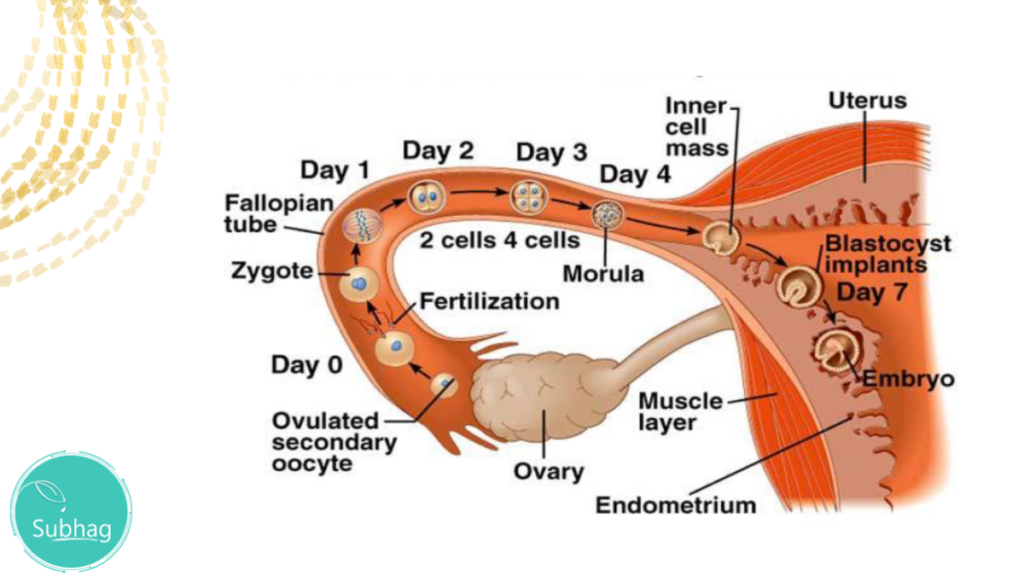Guide to Fertility Identifying the Best Time to Conceive
If you’re trying to get pregnant, it’s essential to note the essentials of fertility. Finding the exact time for ovulation and keeping a balanced lifestyle will help you conceive quickly.
What’s fertility?
Fertility is an individual’s personal capability to produce a child. The method is not a simple and clear one. Besides, to conceive, a woman must go through several phases. If you’re planning to have a kid, you need to learn the basics of fertility so that you can conceive without any problems.
Best time to conceive
For sperm and eggs to work properly to produce the offspring, the reproductive systems in both men and women must be balanced and work at an optimal level. You should know about your menstrual cycle and know if you should attempt to conceive a kid. Your cycle starts on Day 1 and lasts for up to 3 to 5 days. On day 7, some hormone stimulates eggs to ripen in the ovaries. By day 11, the lining of the uterus is thickening.
A mature egg is fertilized from the ovaries between the 13th and 20th days. This is your fertile cycle and the right time to conceive a child. When the eggs mature, they can be fertilized for up to 12-24 hours when they are released from the ovaries. Likewise, sperm will remain alive in a female uterus 12-48 hours after ejaculation. Trying to conceive a baby during this time will raise your chances of pregnancy. The primal body temperature (BBT) of your body is growing during ovulation, and this is the best time to try a baby. The best time to conceive morning or night has a better chance of catching the sharp end of a window that would otherwise shut before going to bed.

Best time to conceive a baby boy after periods
This suggestion is considered to be one of the most essential – the best day to conceive a baby boy after a period of time?
Since male sperm is the quicker of the two, Shettles suggests that it is as close to ovulation as practicable.
Difficulties of fertility
There have been several possible reasons that may create issues with conceiving:
It may be a low sperm count or poor sperm production for men.
In the case of women, fertility declines with age. The chances of getting pregnant in the 35 are much weaker than in the 30s.
Female fertility issues can also be associated with premature ovulation and endometriosis, among other disorders that can impair a woman’s ability to conceive.
If you are a cigarette user, overweight or underweight, your chances of becoming pregnant are likely to be affected.
If a woman’s fallopian tubes are damaged or blocked, the simple movement of eggs and sperm would be hampered.
If the sperm does not fuse with the egg or that the fertilized egg can not be attached to the uterus, the endometrial liner will break down and your period will begin.
Many couples are suffering from fertility problems in getting pregnant. In that case, you should try home insemination kit India for conceiving. It is very successful for many couples to have a baby.
Home artificial insemination
Understanding your options will help you make the best decisions about your fertility journey. This is why insemination at the home best option for them who are suffering from low sperm count or many other problems.
Here is the best guide to fertility treatments that helps you to get pregnant.
What is Home insemination?
Home insemination is a process of fertility care used to deliver semen directly to the cervix or uterus in hopes of becoming pregnant. Often these sperms are cleaned or “prepared” to raise the probability that a woman will become pregnant.
There are two primary techniques to home insemination: intrauterine insemination (IUI) and intracervical insemination (ICI). Some women can also take medicine to enhance the development of ovarian follicles and increase the chances of pregnancy.
The home artificial insemination procedure
Conceiving needs a man’s sperm to pass up the uterus, through the cervix, through the uterus, and then through the fallopian tube, where the egg is fertilized. However, often a man’s sperm isn’t flexible enough to make the journey. Other times, the cervix of a woman may not be favorable to allow sperm to migrate to the uterus. In these and other circumstances, artificial insemination can help a woman to conceive.
When you’re using fresh sperm either from a reputed donor or from your partner, you will need a sperm container. A cup with a large mouth and a shallow depth are ideal. If you’re using a container from home, ensure you wash and dry it carefully; any small amount of soap or water may destroy the sperm.
The male partner can collect semen without the use of lubricants if they are explicitly sperm-friendly. You should have to use a sample within an hour of collection. A fresh sample can be quickly drawn into a syringe for insemination.
Step by step guide to using Home Insemination Kit
Home insemination with kit is the best option for individuals and couples who want to pregnancy without sexual intercourses and who have no established fertility problems. If you’re trying to use donor sperm or have ejaculation-related problems, this could be a design solution that works for you.
Step-1 best time to conceive:
Know your fertile window that will occur just before ovulation.
Step-2 Collect Sprem
Arrange the sample as directed when using donor sperm or allow a fresh sample to be liquefied.
Step-3 Prepare yourself
Make sure you’re in a comfortable place that you can lie down and raise your legs with your cushions.
Step-4 Load semen in the syringe
Drag the sample into the syringe and put the syringe in the vagina as secure as possible without touching the cervix.
Step-5 Put semen in utters
Push the plunger softly until the whole sample has been extracted.
Step-6 takes rest
Hang in a reclined posture with your hips lifted for at least 15 minutes. This will allow as many sperm as possible to swim into the cervix.
Why do people prefer Home insemination?
Peoples who use inseminations to get pregnant are mostly not in this situation as their chosen way of making an infant. Their reproductive organs may not match reproduction (like a couple with two uteruses and no sperm) or they may experience infertility.
People may want to make the insemination procedure more private and less medical by trying to conceive at home, preventing a sterile environment in a clinic where outsiders are involved in an intimate process.
In-clinical inseminations often come with added expenses due to the personnel and facilities involved, but attempting at home will save a large amount of money.
How to make home insemination successful
Try these tips for a safe and ultimately effective for artificial insemination.
• Get your supplies ready already when insemination begins, which includes a sample cup and a 5 ml syringe for real insemination, as well as measures to monitor your fertility well before the case, such as ovulation strips and a basal temperature gauge.
• ensure you’re both relaxed in the atmosphere during the case, determine if you’re more relaxed and comfortable, and find out if your donor is willing to contribute there as well.
• Aim of the right location. When your donor has done his thing and his specimen is in the syringe, you will need to inject it into the vagina and target it down to the back as near to the cervix as possible.
• Go ahead slowly. Slowly press the plunger to clear the syringe and hold it in place for at least 15 seconds before you slowly pull it out. Don’t waste, don’t want to!
The home Insemination success rate
Home insemination has varying success rates depending on the technique you use for insemination. If you want to go down the conventional intercourse path, the normal young, healthy couple has a 20 to 37 percent chance of pregnancy during the first three months of the trial and an 80 percent chance of getting pregnant in the first year of the trial.
After all, whether you opt for sperm donation or co-parenting, it is possible that you are not seeking to conceive by conventional intercourse, and so the statistics would differ for this form of conceiving a child. This would also focus on how you inseminate the semen to the cervix.
You can find thishome insemination kit online India.
Female Fertility Test
Go out to a sperm test to scan for some type of sperm abnormality.
Get your urine test done to detect Chlamydia. This can also affect the impact of sperm and male fertility.
Home insemination is a procedure that offers many couples, with same-sex couples and single women around the world, the chance to become pregnant after having trouble conceiving. If a woman has had trouble getting pregnant or wants to obtain assistance in getting pregnant, she can speak to her doctor regarding her fertility care choices.















